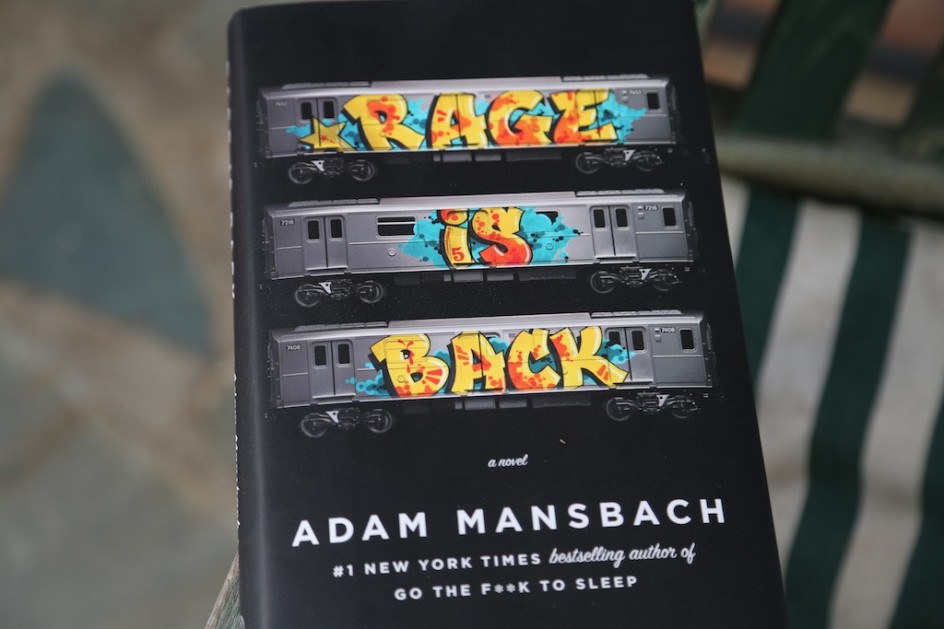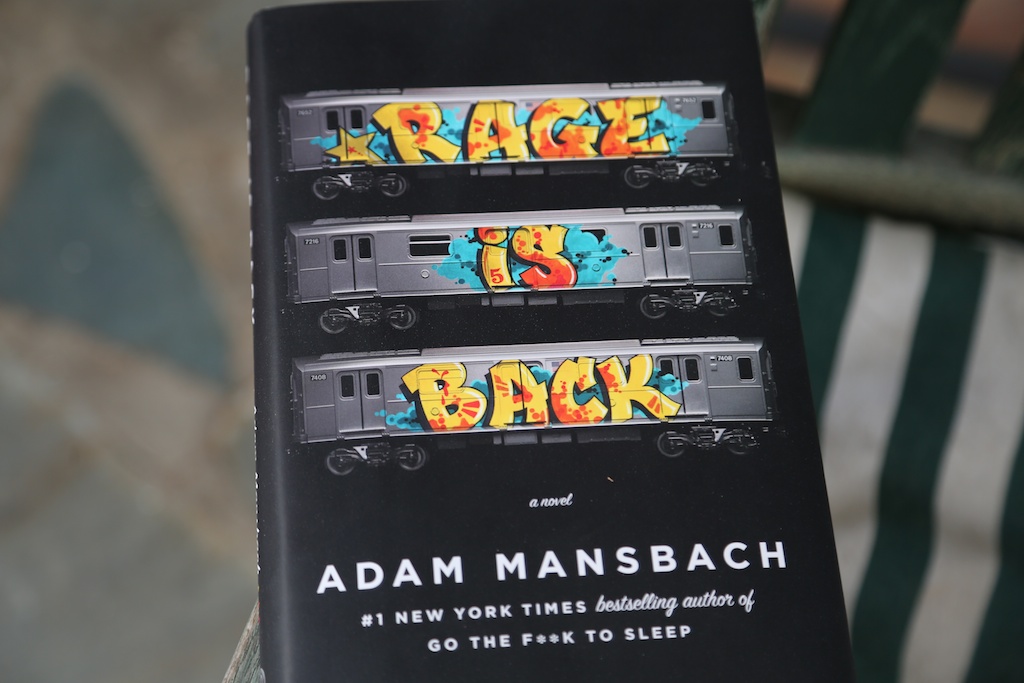
This is the trickiest book review for me to write so far. I loved this book, was in awe of it’s creativity and inventiveness and energy. But I can’t honestly say it is a great read for everybody and I had a few more squawks about the book than many other reviewers have (“Rage Is Back” was chosen as one of Amazon’s best books of the month for January, and is a hot pick of a lot of indie bookstores.) “Rage” is an irreverent, poignant and riotous tribute to the graffiti artists who used New York City – and especially it’s tunnels, overpasses and subway cars – as a new kind of urban canvas in the 1980’s, one of the most daring and ambitious in urban history.
Mansbach is an amazing writer, zipping back and forth from one voice – even one narrator – to another, capturing the hip-hop patois of the mostly poor street kids who dazzled commuters and drove the New York Transit Authority to distraction. Their work involved the decorating – many said desecrating – of business, trains, buses and concrete underpasses and tunnels. They formed clubs, gangs, taunted the police and one another with all kinds of secrets and graphics, struck mostly in the hours before dawn, when even New York mostly slept. For years, the transit police were absolutely no match for these kids, who had lots of spray paint and boundless energy and creativity. Many of drawings were beautiful.
When Rudolph Guiliani and his clean-up squad took over the New York in the late 80’s, they decided that graffiti was a visible sign of the decay that was afflicting the city. He believed that the city to establish order before the crime rate would drop and he turned out to be correct, if not especially sensitive or nice. He ordered the police vandal squads went to stop the street artists, who were already capturing the imagination of the city’s many creative communities. The campaign succeeded, and by 1989 the graffiti artists were gone.
It was a fascinating political, social, racial and cultural crossroads for New York. The graffiti artists were mostly black and Hispanic, with a spattering of Jewish and Italian kids drawn to this inventive and rebellious world and its outlaw ethos. On the one hand, the graffiti was a symbol of a city out of control, on the other an equally potent symbol of its many voices and astounding creative energy. Many in New York were urging the mayor to corral all this sometimes quite amazing artistic talent – the artists created a new language – and find a way to channel and use it, but the city decided instead to go to war against the agile vandals who prowled the subway yards and overpasses spraying secret codes and messages to one another. Midnight battles between mostly white and middle-aged cops and agile teenagers raged through the subway yards for many months. It was an amazing thing to ride through these underground tunnels and see this explosion of underground art.
But these kinds of conflicts – off the wall artists and government – almost always end in one way. That is what makes these stories so compelling and poignant.
Mansbach is not ambivalent about graffiti, he loved it and invoked it to capture the last days of a city struggling to find an identity for itself. Bill Rage is an infamous graffiti artist who returns to New York after a long and mysterious absence. The book is narrated by Dondi, the son he abandoned for 16 years after the murder of a fellow artist at the hands of a psychopathic police officer named Anastacio Bracken. Dondi discovers his father in a dirty heap at the top of a mystical staircase in Brooklyn. Bracken is now running for mayor, and Rage is called to action, gathering the scattered artists from the 80’s to stop him and avenge their friend. They are a memorable crew, turning up in page after page. Mansbach is faithful to their language and style and spirit. That is no small feat.
His story is a metaphor for the struggle between this very populist expression and the establishment’s sense of order and decorum. As the story reflects, New York’s graffiti artists captured the imagination of kids all over the world, especially Europe, where graffiti art started popping up from London to Stockholm. European kids worshiped the best known New York graffiti arts – the real life versions of Billy Rage.
The writing in this book is amazing. It is funny, graphic, makes me think of Kurt Vonnegut stoned. It skips all over the place, filled with outrageous characters and it transports us into the crazy and often beautiful underground world of the graffiti artists. It invokes and remembers another New York , the one before the humorless and grim-faced Puritan politicians arrived to restore order and make the city safe for Wall Street again. It is zany, outrageous, colloquial, I ‘m not sure how Mansbach could have done it. Rage, grown and changed, is on a moral crusade. Anastacio is his cartoon enemy – brutal, relentless and corrupt.
Most of the reviews have been uniformly wonderful, but I had some nits. The narrative is so herky-jerky and confusing you just have to ride with it, fun if you are in the mood but difficult for people who want to more or less understand what is happening. Mansbach has written a really wonderful set piece, a Time Machine book that takes you to another place in time, a kinetic kind of street play. To love it, you just have to pretend you are on a subway car and ride along. Now that I think of it, Mansbach has perfectly recreated the experience or riding a fast train through tunnels filled with beautiful and confusing messages. Maybe that was intentional.
The ending is a spiraling mess and I just threw up my hands up trying to follow it. I had no idea who was where doing what to who, and I don’t think it really mattered. The good guys had some great moments. So here’s the thing. I loved the book and had a blast in Dondi’s world. If you want to know precisely where you are in a story and can’t let yourself go like that, you might want to try something different. Some of the language is hard to follow also. But “Rage Is Back”is one of the boldest and most inventive books I can remember. I lived in and near New York in the 80’s, so the story has special meaning for me. If you didn’t, you might find it hard to digest.

